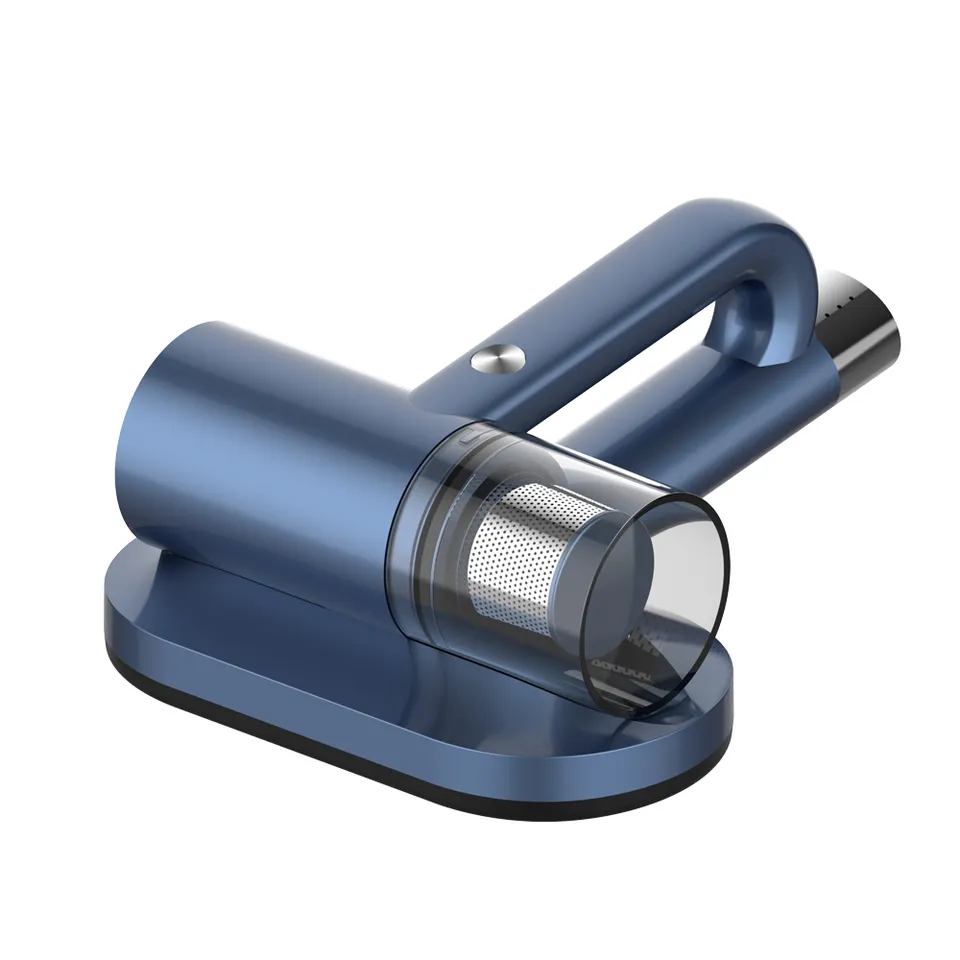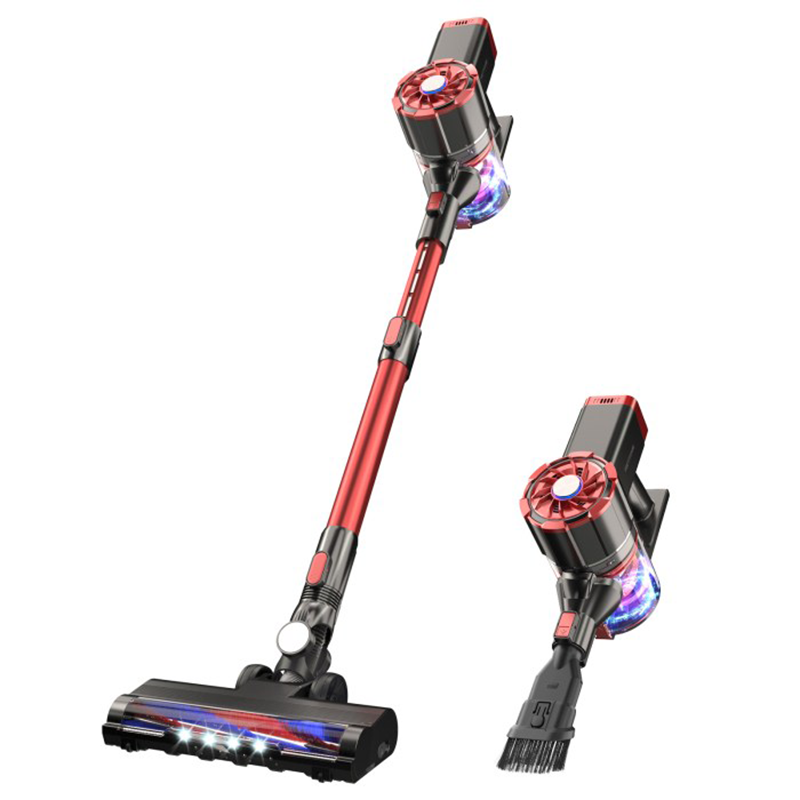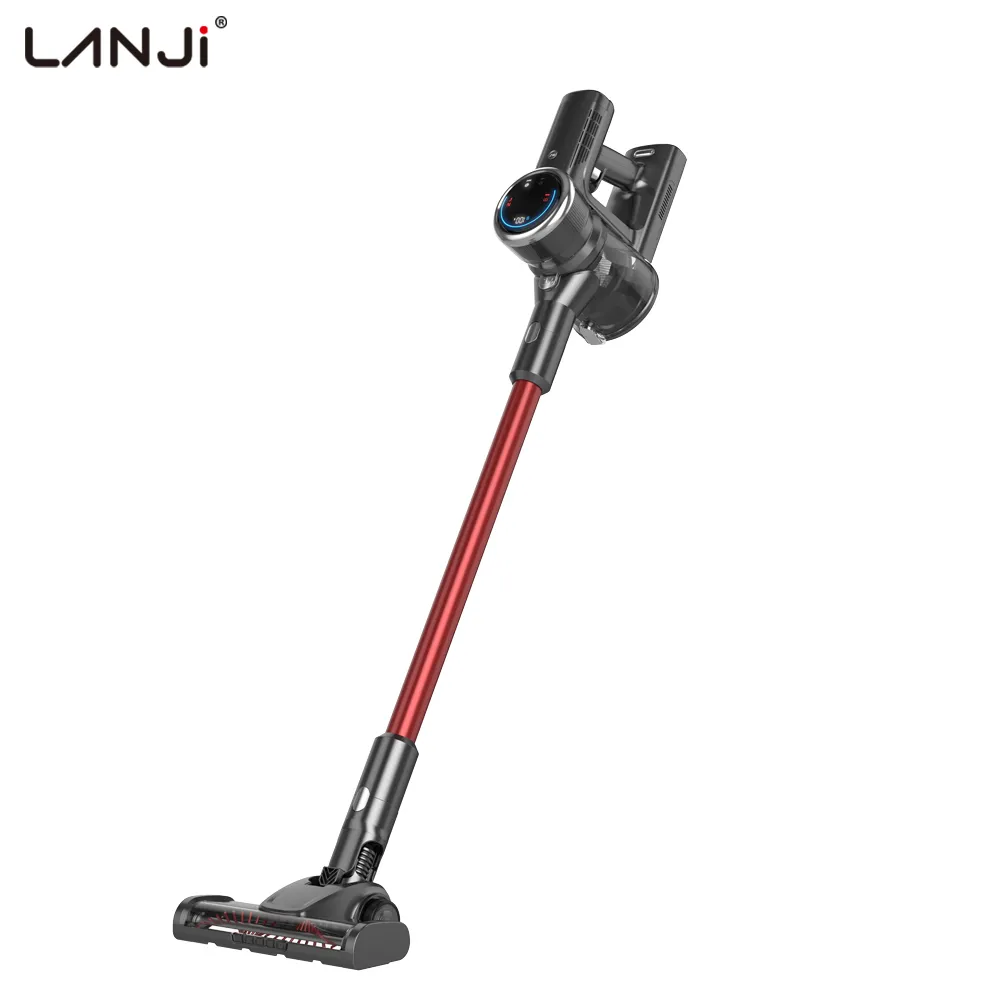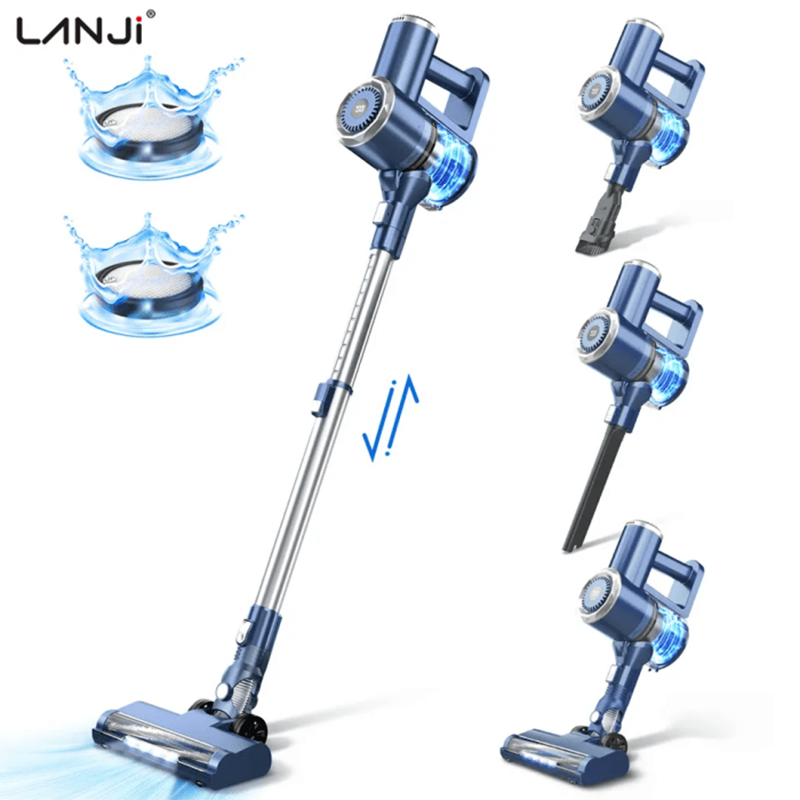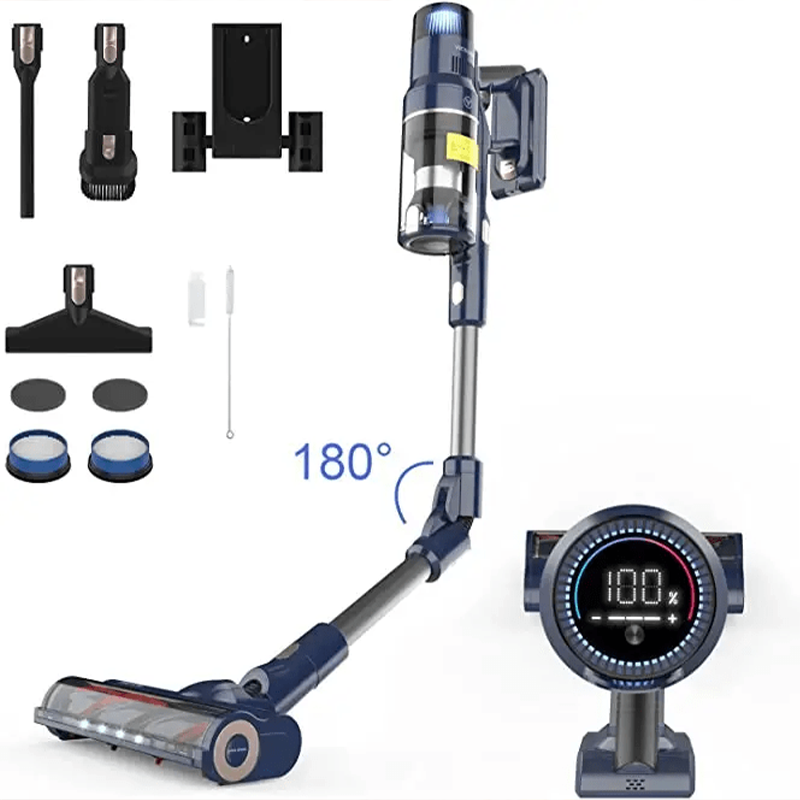How Do We Test Vacuums?
To assess the cleaning performance of vacuums, we conduct a range of tests tailored to each model based on its intended use and design. For instance, we do not expect stick, handheld, or robotic vacuums to possess the same cleaning power as full-sized canister or upright vacuums, but each type has its unique strengths and weaknesses.
To determine the dirt-picking capability, debris retention, maneuverability, and noise level of vacuums, Consumer Reports subjects them to a series of rigorous tests. We embed talc, sand, and pet hair into carpets prior to vacuuming. We use the same mixture of debris on bare floors and observe whether the vacuum effectively picks it up or scatters it around. Additionally, we maneuver the vacuum as you would in real-life scenarios to assess its ease of handling.
Vacuums that perform well initially but fail to maintain their performance over time are not considered winners. Therefore, we have revised our method for calculating a product’s Overall Score. To simplify your choice of a durable and high-performing vacuum, we now incorporate predicted reliability and owner satisfaction ratings from our exclusive member survey, along with performance results from our laboratory tests, to produce a comprehensive Overall Score. This change in scoring has elevated some vacuums in our ratings while pushing others down.
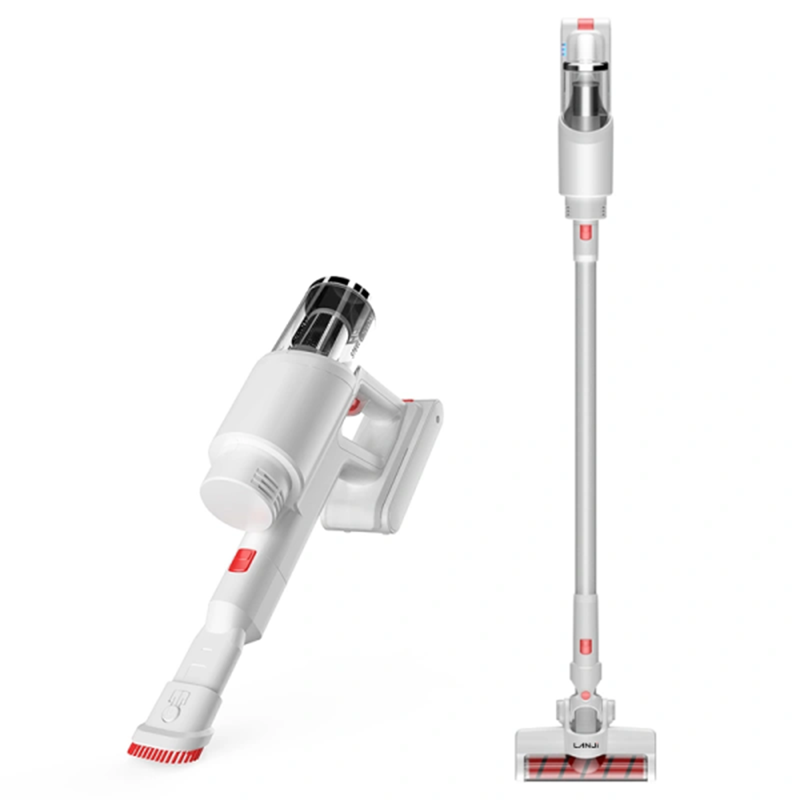
One noteworthy change is that vacuums with cords have demonstrated greater reliability compared to their cordless counterparts. Therefore, this year, we have, for the first time, distinguished the analysis of reliability and satisfaction pertaining to cordless stick vacuums from that of corded stick vacuums, and the revelations are startling. While there are a few cordless stick vacuum brands in our ratings that achieve a Good rating for reliability, none of them score high enough in both reliability and our rigorous lab performance tests to be endorsed by Consumer Reports. Issues surrounding battery-powered stick vacuums are unfortunately quite common.
You will find the Overall Score in our ratings for upright, canister, and stick vacuums, accompanied by individual ratings for reliability, satisfaction, and each specific lab test. Currently, we do not have sufficient data to calculate reliability and satisfaction scores for robotic vacuums. Additionally, we refrain from collecting data on handheld vacuums due to their relatively low cost. Consequently, the Overall Scores for robotic and handheld vacuums are solely based on their performance in our lab tests—similar to the approach we previously adopted for all vacuums.
Another change: Because many robotic vacuums use WiFi to upload cleaning data, our Digital Lab tests each robotic vacuum model for any security or privacy issues for consumers. In our robotic vacuums ratings, you’ll see two new scores for privacy and security.
Shopping by Type
Start by determining the best vacuum for the type of cleaning you do. If you have wall-to-wall carpet or lots of rugs, uprights—especially those with a bag—are the best choice. But for homes with lots of stairs, canisters can be easier to maneuver, and they tend to do well on floors with hard surfaces, from hardwood to tile. Stick vacs and handheld models are great for lighter tasks, such as spilled cereal, that need quick attention. A robotic vacuum may appeal to you if you want to set it and forget it—though you will need to remember to empty the dust bin periodically.
We don’t test central vacuum systems, but they may be an option if you’re doing an extensive remodel or are willing to commit to installing suction tubes behind the walls of every room in the house. They’re certainly powerful.
For the best vacuums in all categories at a price that’s right for you, see our vacuum cleaner ratings. Or read on to learn more about each of the types.
Upright Vacuums
Pros: Uprights tend to cost less than canister vacuums and cut a wider cleaning swath. They’re generally better at deep-cleaning carpets—particularly the bagged models. Most are relatively easy to store because they stand up on their own.
Cons: Pushing and pulling a machine that might weigh upwards of 20 pounds. If that’s a concern, you can sort our ratings by lightweight models (select “More Filters,” then check “Lightweight”), though you’ll notice that the best performers tend to be heavier. Uprights also tend to be noisier than canisters.
Canister Vacuums
Pros: Canister vacuums are better than upright models for cleaning bare floors, stairs, and under furniture, and the attachments are handy for cleaning drapes and upholstery. Some are as good as uprights at cleaning carpets. Most are quieter, and the separate power head makes them seem lighter as well.
Cons: Overall, these vacuums are bulkier than their upright brethren. The hose and wand configuration make a canister more difficult to squeeze into a closet.
Cordless Stick Vacuums
Pros: With recent innovations, performance is improving and some get top marks on the key tests in CR’s vacuum lab—cleaning carpet and bare floors, and picking up pet hair. There’s no cord to trip over as you work, and they take up a lot less storage space than a conventional vacuum.
Cons: Cordless stick vacs can be pricey and the batteries problematic. Consumer Reports does not currently recommend any cordless stick vacuums because of the generally high incidence of problems reported by our members. The problems can include batteries that diminish in power over time or die completely. Such problems are particularly acute by the fifth year of ownership.
Corded Stick Vacuums
Pros: Like uprights, they have tall bodies and handles, and a powerhead. They’re lightweight and convenient when you need to quickly clean up a mess. They also eliminate the need to bend over to clean a dirty floor, unlike a handheld. And typically, they’re reasonably priced.
Cons: Most don’t perform as well on carpet as full-sized vacuums. They are mainly suited for picking up surface litter and aren’t intended as a replacement for a conventional vacuum. The capacity of their dirt bin is typically small. Most are fairly noisy, and having a cord may offset the convenience.
Handheld Vacuums
Pros: These miniature models come corded or cordless. They’re handy for light, quick surface cleaning on short-pile carpets and bare floors; some can handle pet hair on upholstery. They’re also useful for cleaning up your car’s interior.
Cons: They lack the power and capacity of full-sized upright or canister models.
Robotic Vacuums
Pros: Robotic vacuums do the grunge work while you relax. In uncluttered rooms, a robotic can touch up between regular manual vacuuming sessions. The better models can find their way out of tight spots and around extension cords. Many models can be controlled via a smartphone app.
Cons: No robotic vacuum can match the deep cleaning you’ll get from the best uprights and canisters. These vacuums are not the ideal choice if you have shag carpeting or area rugs.
Central Vacuums
Pros: They’re easier to use than a canister. With no vacuum body to pull along, you carry only the hose and powerhead. Central vacuums tend to be relatively quiet, and their dirt chambers don’t need to be emptied very often.
Cons: Central vacuums are pricey and require professional installation. Their 30-foot hoses can be cumbersome to wield, and they hog storage space. And there’s no in-unit place to store cleaning tools while you work.
What to Consider While Shopping
Today’s vacuums come in a range of designs, sleek shapes, and cool colors. What matters most is how well they clean. Remember that one type of vacuum might have features that appeal to you, but it should also fit your cleaning needs.
Pet owners, take note: Upright and canister vacuum cleaners that excel at regular jobs typically test best in show for picking up pet hair.
Check the Features
A vacuum cleaner with a motorized brush cleans carpets better than one powered only by suction. A switch that can deactivate the brush will help protect the finish of bare floors and avoid scattering debris. Consider models with a manual carpet pile-height adjustment control, along with suction control for cleaning draperies and other delicate fabrics.
Bagged vs. Bagless
Bagless vacuum cleaners save on the cost of purchasing bags, but they also require more filters that need periodic cleaning or—for HEPA filters—replacing. The dust and mess of emptying the bin of a bagless model can be problematic if you have asthma or allergies.
Try It Out
Even if you order online, consider going to a store first. Push, pull, turn, and lift the vacuum cleaners you’re considering. Check out the controls and features. If an online price is low, see whether the store will match it.
Keep an Ear Out for Noise
No vacuum cleaner in our ratings is so loud that we recommend hearing protection, but any vacuum will seem louder in a room with a lot of echo, such as a tiled bathroom. Canister vacuums tend to be quieter.
Watch for Sales
Discounts of 20 to 30 percent off are increasingly available, especially during the holiday season. For mass-market brands, you don’t have to wait until Black Friday. Check store circulars or sign up on manufacturer or retailer email lists to receive coupons and news of upcoming promotions.
Connected or Not?
Not all robotic vacuums have WiFi connectivity—some just simply clean. Those without connectivity are better for your privacy and security because they don’t send data anywhere, but you’ll lose out on some more advanced features, such as mapping and targeted cleaning.

 EN
EN
 AR
AR
 FR
FR
 DE
DE
 IT
IT
 JA
JA
 KO
KO
 PT
PT
 RU
RU
 ES
ES


